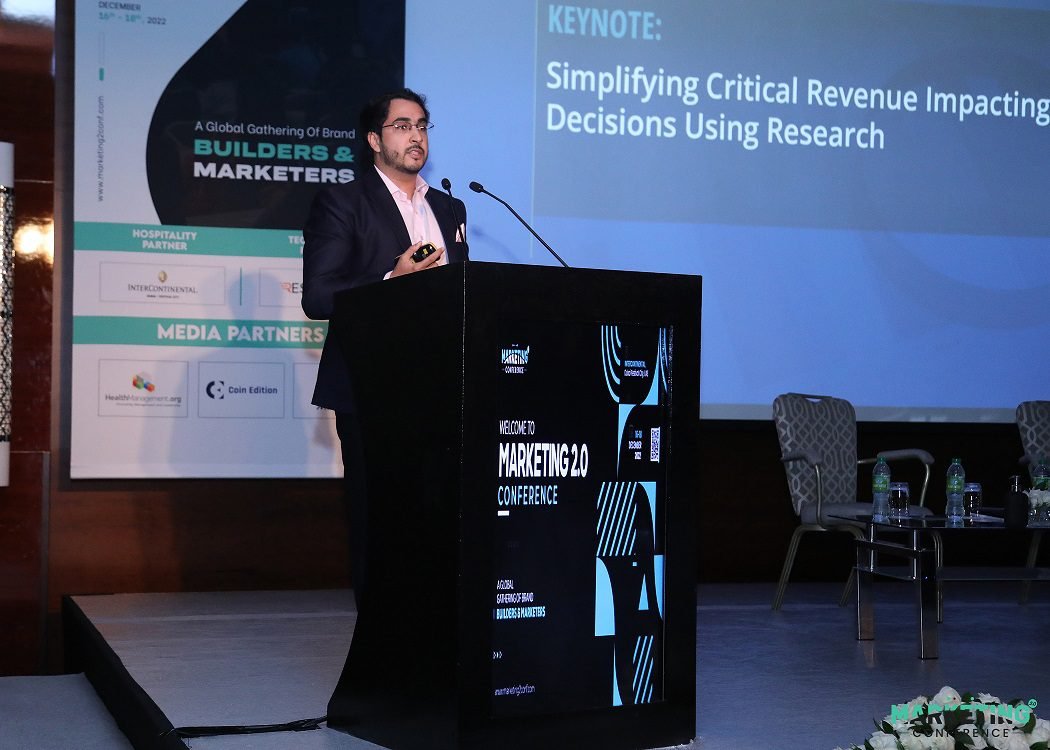
Ad fraud is a pervasive problem in the digital advertising world that marketers must proactively address. The World Federation of Advertisers estimates that advertisers will lose more than $50 billion in 2021 to digital advertising fraud. As discussed at the Marketing 2.0 Conference, ad fraud takes many forms, from impersonating legitimate users to deploying sophisticated bots and malware to circumvent security protocols, which leads to severe ad fraud impact on marketers. Marketers can tackle ad fraud by investing in robust anti-fraud technologies, being vigilant about user-data reviews, and working to educate themselves and their teams about the latest trends and technologies in ad fraud prevention in 2024.
As digital advertising has grown over the years, so have the opportunities for ad fraud. Ad fraud impact on marketers affects millions of digital advertisers yearly, costing them money and causing losses. As highlighted at the Marketing 2.0 Conference, it’s estimated that approximately half of all digital ad impressions and nearly 20% of total digital ad spending is associated with fraud. Marketers need to be aware of the risks and put into place measures to protect themselves and their companies from potential fraud.
Here are a few ad fraud prevention tips to remember
- Anti-Fraud Technologies
- User Data Reviews
- Education
- Audit And Monitor Ad Traffic
- Keep Campaign Parameters Tight
- Investigate Unknown Sources
- Implement Review Protocols
- Set Budgets
The first step in tackling ad fraud is investing in the right anti-fraud technology solutions. Technology is vital to ensuring a fraud-free digital advertising experience. Marketers must utilize the most up-to-date solutions to ensure legitimate users see their ads. Marketers should investigate various solutions and pick from the best ad fraud detection companies to fit their needs, as some solutions may specialize in click fraud detection. In contrast, others may focus on protecting campaigns from bot-based ad fraud. Marketers should also check whether their solutions provide additional protection against malware and botnet threats.
Marketers should also regularly review user data and be on the lookout for suspicious or fraudulent activity. While anti-fraud technologies like fraud protection & detection software are necessary for protecting campaigns from large-scale fraud attacks, human analysis of user data can uncover discrepancies that technology solutions may not detect. Marketing 2.0 Conference reviews that marketers should focus their user-data reviews on signs of invalid views and fake clicks for ads, false leads, invalid registrations, and invalid device identification. Regular user-data reviews can help marketers identify any potential fraudulent activity and take steps to mitigate it.
Education is another critical factor in tackling ad fraud. Marketers should educate themselves and their teams on the latest trends in ad fraud and the different technologies, and train them to implement fraud detection tools that can help protect their campaigns. They should also encourage their teams to take the necessary steps to prevent ad fraud, such as avoiding ad exchanges with poor reputations or poor-quality traffic sources. Marketing 2.0 Conference reveals that education and vigilance are key to ensuring marketers don’t become victims of ad fraud.
One of the most critical steps in preventing ad fraud is to audit and monitor ad traffic regularly. Advertisers should carefully review the ads’ data to ensure it aligns with their intended target audience. Any irregularities should be noted and further investigated. Regularly running third-party fraud prevention services can also help catch discrepancies and inconsistencies.
To prevent fraud, Marketing 2.0 Conference shares that marketers should keep their campaign parameters tight. Marketers should know their target audience and geographic reach and use demographic and location-based filtering. This can help avoid campaigns that may appear promising on the surface but are actually reaching low-value users, leading to a large percentage of invalid impressions and click-throughs.
If an unknown source is suddenly receiving high amounts of traffic, the source should be investigated to ensure the activity is legitimate. Advertisers should look for suspicious IP addresses or other signs pointing to fraud. Taking the time to investigate internet advertising fraud can save advertisers from losing large sums of money to malicious activities.
Review protocols can also help identify suspicious activities associated with a particular campaign. Marketing 2.0 Conference suggests that an advertiser can regularly review its campaigns and investigate any anomalies it finds. It can also place regular tests to detect any potential signs of ad fraud further.
Finally, it’s vital for advertisers to set budget caps for their campaigns. Doing so allows them to control their ad spend and keep any potential fraud activity in check. It also allows advertisers to focus their ad budget on their intended target audience and improve campaign budget optimization.
Marketing 2.0 Conference emphasizes that marketers can ensure they’re protecting their campaigns from ad fraud by taking these steps. Keeping campaigns well-monitored, investigating suspicious sources, implementing review protocols, and setting budget caps can help ensure advertisers have a positive return on investment. By staying vigilant and making ad fraud prevention a priority, advertisers can protect their business and maximize their advertising campaigns.
Conclusion
Ad fraud is a significant issue in the digital advertising worldand can cost advertisers billions of dollars in yearly losses. Marketers can tackle ad fraud by investing in robust anti-fraud technologies, being vigilant about user-data reviews, and working to educate themselves and their teams about the latest trends and technologies in ad fraud prevention. Doing so will help protect marketers from becoming victims of ad fraud and enable them to launch digital advertising campaigns that will reach legitimate users confidently. Learn more about anti-fraud management strategies and approaches at upcoming marketing events in 2024, like Marketing 2.0 Conference in the USA and Dubai.
![]()

Amilia Brown is a seasoned business writer & strategist who simplifies complex business concepts and turn them into engaging narratives. As a trusted business writer, she delivers actionable insights with precision.








